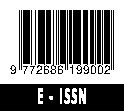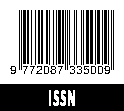The Relationship Between Brands’ Usage and The Body Image of Young Indonesian Women
Abstract views: 459 | PDF downloads: 450
Abstract
Marketing activities by brand on Instagram have an impact on women's body image because the models used by brand tend to represent a standard of beauty that exists in society. However, brand have started using models of all body shapes and sizes to meet the demands of consumers on social media in recent years. This study aims to determine whether there is a relationship between the use of social media Instagram by brand and the body image of young Indonesian women by using the Agenda Setting theory, Body Image through the Multidimensional Body Self Relation Questionnaire-Appearance Scale (MBSRQ-AS). Data for quantitative research were obtained by distributing online questionnaires to young women aged 18-24 years who live in the areas of Jakarta, Bogor, Depok, Tangerang and Bekasi who are active Instagram users through a non-probability sampling technique. Research result states that a relationship between brands’ usage of social media (Instagram) and the body image of young Indonesian women was formed when they were exposed to marketing content featuring models with thin bodies as well as various body shapes and sizes. In addition, they also formed a perception on the content in regard to their needs, interests, and if they found the model ‘interesting’. However, the usage of Instagram by brand did not appear to have a relationship with the behavior of young women as most respondents almost never exercised excessively or limited their diet after seeing the brands’ content.
References
Aristantya, E. K., & Helmi, A. F. (2019). Citra Tubuh pada Remaja Pengguna Instagram. Gadjah Mada Journal of Psychology (GamaJoP), 5(2), 114–128. https://doi.org/10.22146/gamajop.50624
Cat, N. (2020). Instagram users in Indonesia. Retrieved from https://napoleoncat.com/stats/instagram-users-in-indonesia/2020/01
Colon, A. (2016, March 10). #AerieREAL Proves That Body-Positive Ads Can, In Fact, Spike Sales. Refinery29. Retrieved from https://www.refinery29.com/en-us/2016/03/105576/aerie-american-eagle-photoshop-free-aeriereal-campaign
Creswell, J. W. (2012). Research Design Pendekatan Kualitatif, Kuantitatif, dan Mixed. Pustaka Pelajar.
Databoks. (2021). Inilah Negara Pengguna Instagram Terbanyak, Indonesia Urutan Berapa? Retrieved from https://databoks.katadata.co.id/datapublish/2021/08/03/inilah-negara-pengguna-instagram-terbanyak-indonesia-urutan-berapa
Kemp, S. (2022) Hootsuite, Digital 2022: Indonesia https://datareportal.com/reports/digital-2022-indonesia
Denich, A. U., & Ifdil, I. (2015). Konsep Body Image Remaja Putri. Jurnal Konseling Dan Pendidikan, 3(2), 55–61. https://jurnal.konselingindonesia.com/index.php/jkp/article/viewFile/165/142.
EngeIn, R. (2020, June 20). Why Instagram Is Worse for Body Image Than Facebook. Psychology Today. Retrieved from https://www.psychologytoday.com/us/blog/beauty-sick/202006/why-instagram-is-worse-body-image-facebook
Ghozali, I. (2016). Aplikasi Analisis Multivariete Dengan Program IBM SPSS 23 (8th ed.). Badan Penerbit Universitas Diponegoro.
Gustam, R. R. (2015). Karakteristik Media Sosial dalam Membentuk Budaya Populer Korean Pop Di Kalangan Komunitas Samarinda dan Balikpapan.EJournal Ilmu Komunikasi, 3(2), 224–242. https://ejournal.ilkom.fisip-unmul.ac.id/site/wp-content/uploads/2015/02/Jurnal%20-%20Rizky%20Ramanda%20Gustam%20(02-25-15-06-07-31).pdf
Huffman, A. (2020, February 14). Abercrombie & Fitch Attempts To Bury Body-Shaming Past With New Ad Campaign. Ming. Retrieved from https://www.minq.com/new/2490231/abercrombie-attempts-to-bury-body-shaming-past-with-new-ad-campaign/
Juditha, C. (2019). Agenda Setting Penyebaran Hoaks di Media Sosial. Jurnal Penelitian Komunikasi, 22(2), 155–168. https://doi.org/10.20422/jpk.v22i2.669
Kartika. (2021, July 23). Ini Cara Menentang Standar Kecantikan yang Tak Masuk Akal. Jawa Pos. Retrieved from https://radarsolo.jawapos.com/entertainment/lifestyle/23/07/2021/ini-cara-menentang-standar-kecantikan-yang-tak-masuk-akal/
Levinson, S. (2013, May 3). Abercrombie & Fitch CEO Explains Why He Hates Fat Chicks. Elite Daily. Retrieved from https://www.elitedaily.com/news/world/abercrombie-fitch-ceo-explains-why-he-hates-fat-chicks
Mansfield, T. (2012). Gender Differences in Body-Esteem, Body Dissatisfaction, and the Effects of the Medias ‘Thin Ideal’. Retrieved from https://www.semanticscholar.org/paper/Gender-differences-in-body-esteem%2C-body-and-the-of-Mansfield/47c95e12291a7a04890fa366a9e73f845b2d7778
Mukhlis, A. (2013). Pengaruh Pelatihan Berpikir Positif pada Ketidakpuasan Terhadap Citra Tubuh (Body Image Dissatisfaction). Jurnal Psikoislamika, 10(1), 5–11. https://core.ac.uk/download/pdf/333901642.pdf
Nantingkaseh, A. H. (2020). Peran Media Sosial Instagram dalam Mendukung Program Komunikasi Pemasaran Samakta Guest House. Jurnal InterAct, 9(1), 28–50. https://doi.org/10.25170/interact.v9i1.1709
Nguyen, S. H. (2013). Highly attractive models in advertising: What causes negative affect?. VNUHCM Science and Technology Development Journal, 16(1), 20–34. https://doi.org/10.32508/stdj.v16i1.1407
Prahmadhani, D. T. (2007). Persepsi Wanita Dewasa Dini Pengguna Produk Skin Care Tentang Kecantikan. Retrieved from https://repository.usd.ac.id/28150/2/019114109_Full%5B1%5D.pdf
Priana, A., Sutjipto, V. W., & Romli, N. A. (2022). Hubungan Penggunaan Media Sosial Instagram @riliv dengan Pemenuhan Kebutuhan Informasi Kesehatan Mental Followers. CoverAge: Journal of Strategic Communication, 12(2), 85-97. https://doi.org/10.35814/coverage.v12i2.3097
Purbohastuti, A. W. (2017). Efektivitas Media Sosial Sebagai Media Promosi. Tirtayasa Ekonomika, 12(2), 212–231. https://doi.org/10.35448/jte.v12i2.4456
Ritonga, E. Y. (2018). Teori Agenda Setting dalam Ilmu Komunikasi. SIMBOLIKA, 4(1), 32–41. https://doi.org/10.31289/simbollika.v4i1.1460
Romli, A. S. M. (2018). Jurnalistik Online: Panduan Mengelola Media Online. Nuansa Cendekia.
Samosir, D. T. P., & Sawitri, D. R. (2015). Hubungan Antara Citra Tubuh dengan Pengungkapan Diri pada Remaja Awal Kelas VII. Jurnal Empati, 4(2), 14–19. https://doi.org/10.14710/empati.2015.14885
Sari, G. G., Wirman, W., & Dekrin, A. (2021). Pengaruh Body Image terhadap Konsep Diri Mahasiswi Public Relation Di Kota Pekanbaru. CoverAge: Journal of Strategic Communication, 12(1), 52-60. https://doi.org/10.35814/coverage.v12i1.2610
Sugiyono. (2016). Metode Penelitian Kuantitatif, Kualitatif dan R&D. Alfabeta.
Wallis, J. M. & Kozar, J. M. (2015). The Effects of Social Media on the Body Satisfaction of Adolescent and Young Adult Females, International Textile and Apparel Association Annual Conference Proceedings 72(1), 1–2.



















